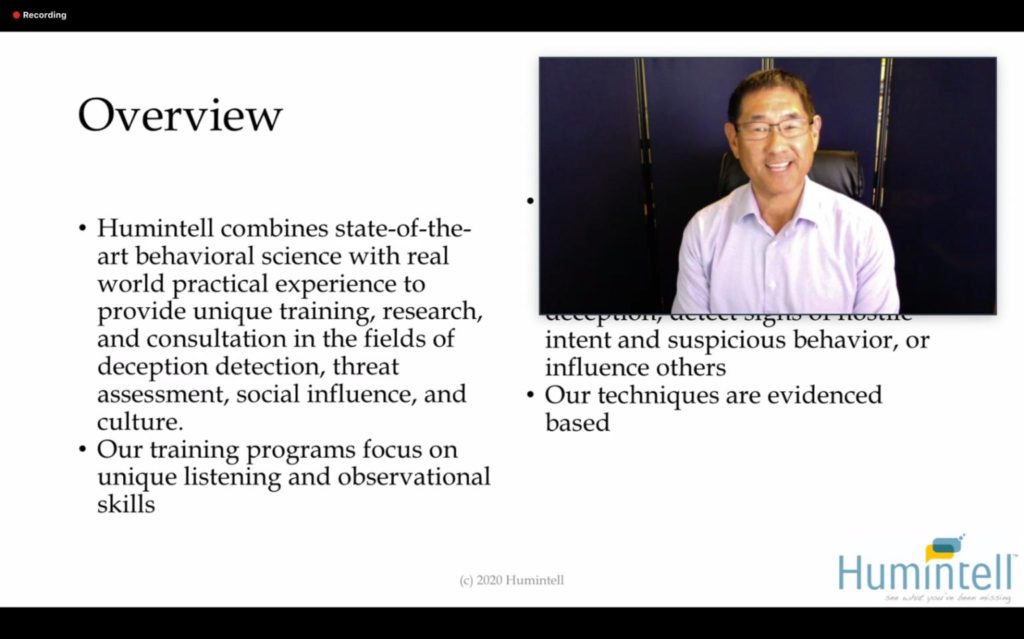Thanks to everyone who attended the first session of our body language webinar series!
The session was held last Thursday, July 30th and the topic was Reading People: The Big Picture.
Here’s what people are saying about session 1:
It has been amazing! Thank you for sharing your knowledge!
It’s been tremendously interesting and enriching!
Dr. Matsumoto covered a variety of topics
He started with an overview of Humintell, who we are and what we do and then he started the training with a fun video on how much we can miss if we’re not paying attention.
After a brief overview of nonverbal communication, he explained how body language/nonverbal behavior fits into the bigger framework of reading people. He mentioned how there’s more to reading people than just body language and that behavioral traces such as smartphone data can give us insights into the personality of an individual.
Dr. Matsumoto then moved on to explain more in detail his definition of what body language was and provided a basic framework for reading nonverbal behavior. There are many messages that are signaled by nonverbal behavior that are conveyed through various nonverbal channels such as face, hands, voice and whole body.
Finally he explain what kinds of insights can be gleaned by reading body language or nonverbal behavior and ended with a 15 minute Q&A where he took questions from attendees.
Missed this session? Don’t worry! You can still be a part of this 3 part body language webinar series.
Session 2 will be held on 8/13 and is entitled “Let’s Face it! The Face and Facial Expressions”. Dr. Matsumoto will cover the neuroanatomy and musculature of the face, the many different things that faces do and why emotion expression is so special and important.
Session 3 will be held on 8/27 and is entitled “How about a Thumbs Up? All About Gestures”. You’ll learn about gestures, the different types of speech associated gestures and what illustrators and emblems are,
Each virtual session includes 45 min of instruction with 15 min of Q&A and a recording will be provided if you cannot attend live.
Regular Price 2 Sessions: $258
YOUR price ONLY $239
And get the recording of the 1st session FREE
Hurry! Offer ends midnight on Friday, August 7th.

 For many people around the globe, smartphones are an integral and indispensable part of their daily lives. Rarely more than an arm’s length away, these sensor-rich devices are easily used to collect rich and extensive records of their users’ behaviors which some argue poses serious threats to individual privacy.
For many people around the globe, smartphones are an integral and indispensable part of their daily lives. Rarely more than an arm’s length away, these sensor-rich devices are easily used to collect rich and extensive records of their users’ behaviors which some argue poses serious threats to individual privacy. People often think that the terms “reading people” and “body language” are synonymous but that’s simply not true. In reality, being able to read body language or nonverbal behavior is just one (important) part of reading people.
People often think that the terms “reading people” and “body language” are synonymous but that’s simply not true. In reality, being able to read body language or nonverbal behavior is just one (important) part of reading people.